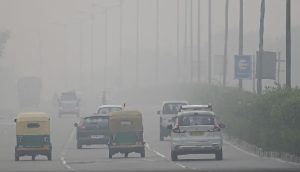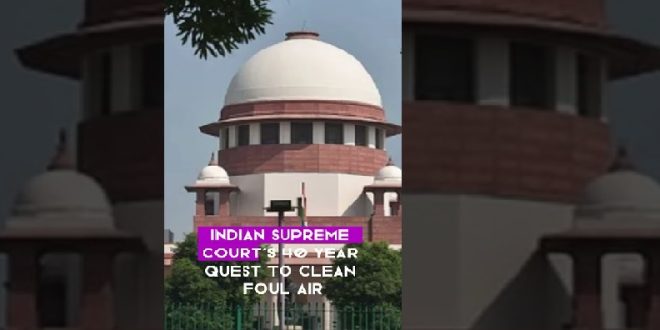28-11-2023
Bureau Report + Agencies
NEW DELHI: Pollution in India’s capital Delhi has made global headlines in recent years, but it’s not a new problem. For around four decades, the country’s top court has actively discussed the issue, sometimes passing orders that have significantly reshaped life in Delhi.
 Its latest intervention came in early November, when the Supreme Court called for “immediate action” after air quality in the capital deteriorated to alarming levels.
Its latest intervention came in early November, when the Supreme Court called for “immediate action” after air quality in the capital deteriorated to alarming levels.
The court heard arguments on measures implemented by the Delhi government to tackle the situation, from reducing stubble burning in the neighboring states of Punjab and Haryana, to a proposal to allow motor vehicles only on alternate days, depending on whether the last number on their licence plates was odd or even.
The court left the decision of formulating these policies to the government – but last week, it pulled up authorities for not following its instructions to allocate funds for a rapid rail system, calling it a “gross breach of assurances”. The project aims to connect Delhi with its neighboring cities through high-speed rail corridors to reduce vehicular pollution.
The top court also accused the Punjab state government of not doing enough to stop stubble burning and said that farmers in the state were being vilified due to its poor management of the problem.
 The Supreme Court has often taken the lead in reforms to clean up Delhi’s air – some of its orders include rules on the kind of vehicles that should run in the city; the relocation of thousands of smoke-spewing factories; and the sealing of businesses to reduce emissions. It has also been lauded for making the government act, even when it was unwilling but critics have questioned the efficacy of the court’s decisions and accuse it of wading into executive action often. Some have also pointed out that despite reforms, pollution in the capital has only worsened over the past 40 years.
The Supreme Court has often taken the lead in reforms to clean up Delhi’s air – some of its orders include rules on the kind of vehicles that should run in the city; the relocation of thousands of smoke-spewing factories; and the sealing of businesses to reduce emissions. It has also been lauded for making the government act, even when it was unwilling but critics have questioned the efficacy of the court’s decisions and accuse it of wading into executive action often. Some have also pointed out that despite reforms, pollution in the capital has only worsened over the past 40 years.
Shyam Divan, a senior lawyer, has recently wrote that India’s top court plays the role of a “policymaker, lawmaker, public educator and super administrator” all at once.
“In the US, they have the Congress, the Federal Environment Protection Agency and bags of money to protect the natural environment. Here, we have our Supreme Court,” he said.
However, the court’s defenders view it as a protector and a forum where problems can be solved collaboratively.
 Pressmediaofindia
Pressmediaofindia




